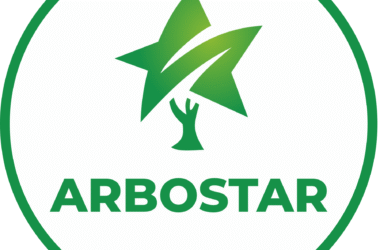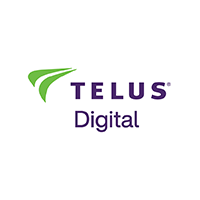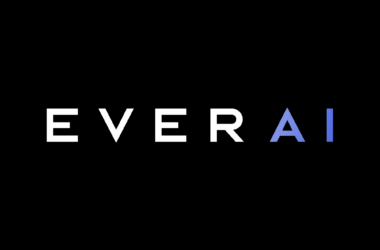As a undertaking supervisor, I’ve examined, reviewed, and evaluated the preferred undertaking administration software program to shortlist the very best instruments to handle and management initiatives and groups extra successfully. Over time, I’ve gained firsthand expertise with numerous platforms, understanding their strengths, weaknesses, and greatest use circumstances. This course of has concerned deep dives into their options, consumer interfaces, and total effectivity. My purpose has been to determine software program that not solely improves workflow but additionally enhances group communication and drives productiveness. By leveraging these instruments, undertaking managers can make sure that duties are accomplished on time, sources are successfully utilized, and undertaking objectives are persistently met.
For groups that thrive on visible planning, TeamGantt gives intuitive Gantt chart-based undertaking scheduling. It’s a wonderful various for many who wish to visually map out timelines, dependencies, and progress in a simple, easy-to-understand format.
Celoxis stands out with its superior enterprise intelligence analytics and customizable dashboards. This platform is good for organizations targeted on data-driven decision-making and undertaking oversight. The depth of reporting and customization makes it significantly helpful for medium to large-scale operations.
Wrike is a strong undertaking administration answer designed for scalability. It’s well-suited for big groups and enterprises needing real-time collaboration, workflow automation, and intensive integration choices, making it adaptable to varied enterprise environments.
Particularly tailor-made for businesses, Productive combines undertaking administration with profitability monitoring, useful resource allocation, and time administration. This makes it a fantastic match for inventive and advertising and marketing businesses needing perception into undertaking prices and useful resource effectivity.
Hub Planner shines in terms of useful resource administration, providing sturdy scheduling and planning capabilities. It permits managers to forecast workload and guarantee sources are optimally allotted throughout initiatives, making it a wonderful selection for groups with advanced scheduling wants.
ClickUp is a flexible, all-in-one productiveness platform. It gives instruments for job administration, purpose monitoring, and doc collaboration, consolidating a number of productiveness wants right into a single, customizable interface. ClickUp’s adaptability makes it common amongst startups and rising groups.
Bonsai is a complete answer geared in the direction of businesses, offering options like shopper CRM, contracts, and invoicing, together with sturdy undertaking administration capabilities. It’s particularly useful for these managing each initiatives and shopper relationships in a single place.
Hive is a collaborative undertaking administration instrument that brings collectively automation, time monitoring, and superior analytics. It helps groups keep organized and enhance productiveness by automating routine duties and enhancing visibility into workflows.
Zoho Projects is a part of the bigger Zoho Suite, guaranteeing seamless integration throughout all Zoho functions. With Gantt charts, time monitoring, and subject administration, it’s a stable selection for companies already utilizing different Zoho merchandise, permitting them to keep up consistency throughout instruments.
Visor takes a novel strategy with its spreadsheet-based undertaking administration. This flexibility permits groups to control information dynamically whereas collaborating in real-time, mixing the ability of a standard spreadsheet with the capabilities of contemporary undertaking monitoring.
Paymo is an all-in-one instrument for SMBs that merges undertaking administration with time monitoring and invoicing. It’s a nice match for small to medium-sized groups in search of a unified answer to handle initiatives, monitor time, and deal with shopper billing.
Quickbase gives a robust give attention to course of automation and customization. Customers can construct tailor-made apps to suit their distinctive undertaking necessities, making it a compelling selection for corporations that want customized workflows or have very particular undertaking administration wants.
Teamhood is a versatile undertaking administration instrument that helps agile methodologies, combining Kanban boards with Gantt charts and time monitoring. It’s significantly appropriate for agile groups that need an built-in view of progress.
Quire allows detailed job breakdowns with a nested construction that retains advanced initiatives organized. By providing a transparent hierarchy of duties, it ensures that every one group members perceive their obligations and the broader undertaking plan.
Miro gives an interactive whiteboard platform for groups who worth visible brainstorming and collaborative planning. It’s preferrred for distributed groups in search of a inventive method to brainstorm and map out undertaking workflows collectively.
Asana’s intuitive interface makes it a well-liked instrument for job administration and undertaking monitoring. With customizable workflows, groups can simply plan, arrange, and handle duties, making Asana an accessible selection for groups of any measurement.
Trello’s card and board system is synonymous with visible undertaking administration simplicity. It’s particularly appropriate for smaller groups and initiatives that profit from visible job group, providing a simple method to maintain monitor of who’s doing what.
Basecamp is a basic within the undertaking administration house, offering a centralized platform for communication, file sharing, and job administration. Its simplicity and give attention to collaboration make it an efficient instrument for protecting everybody aligned.
Smartsheet brings the familiarity of spreadsheets along with superior undertaking administration instruments, offering flexibility for many who choose to work in a tabular format however want extra highly effective administration capabilities. It’s preferrred for customers who need the very best of each worlds.
Jira is the gold customary for software program growth initiatives, offering sturdy assist for agile methodologies. With options like dash planning and subject monitoring, Jira is the go-to instrument for groups managing advanced software program growth lifecycles.
Switching from monday.com or any established undertaking administration instrument may be daunting, however the alternate options listed above every carry distinctive strengths to the desk. Whether or not you want superior enterprise intelligence, agency-specific options, or agile-friendly platforms, this listing gives a various set of choices to assist your group thrive.
Tell us within the feedback which instruments have labored greatest to your group and why! We’d love to listen to about your experiences.
Source link





naturally like your web site however you need to take a look at the spelling on several of your posts. A number of them are rife with spelling problems and I find it very bothersome to tell the truth on the other hand I will surely come again again.